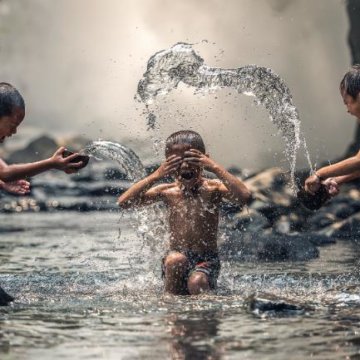- About
- Topics
- Picks
- Audio
- Story
- In-Depth
- Opinion
- News
- Donate
- Signup for our newsletterOur Editors' Best Picks.Send
Read, Debate: Engage.
| located: | India, Pakistan |
|---|---|
| editor: | Shadi Khan Saif |
In the backdrop of bitter warmongering in South Asia, the real time bomb ticking briskly towards deadly explosion is the scarcity of water both in India and Pakistan.
Both New Delhi and Islamabad – who have a history of deadly armed conflicts between them – seem utterly failed in managing the available water resource amid rapidly rising population in the two countries. Time and again we have been coming across certain frightening symptoms of this pressing issue that is yet to receive the due attention of the decision makers.
Visibly shaken Indians can be seen queuing up for water in India’s sixth-largest city, Chennai, with nearly 5 million residents.
Little rain due to change in weather patterns forced by climate change is one factor that needs a much bigger, and in fact global, attention. What India badly needs is to adopt a religiously disciplined and responsible approach towards using this precious natural resource.
Earlier this year, we saw India rush to announce stopping the flow of water to Pakistan in the wake of a deadly suicide attack on Indian security forces in the troubled valley of Kashmir.
The fact remains that Pakistan, like India, is facing a grim situation in regard to managing its water resources for the rapidly growing population. For instance, Pakistan’s biggest city Karachi needs 1.1 billion gallons daily, but it is only receiving roughly half of that currently.
Amid the growing disparity in Indian society, the fight over water within the country would cause more damage than any other perceived international conflict over water in the region.
Chennai is already witnessing unrest as its low income, if not poor people need to wait with buckets for their rationed amount from state water trucks. At the same time, the well-off are accessing water relatively easily by spending their wealth.
As per some reports, many water sources in India are already contaminated with both bio and chemical pollutants, and over 21 percent of the country's diseases are water-related. Furthermore, children in 100 million homes in the country lack water, and one out of every two children are malnourished.
Experts have long been warning that India's overall water availability is running dry, and the issue is expected to worsen as the overall population is expected to increase to 1.6 billion by 2050. The Indian government’s own official reports have warned 21 cities will run out of groundwater in the year 2020, which is quite frightening.
Read FairPlanet's dossier on Water
For more news related content, read our article on Murtaja Qureiris
